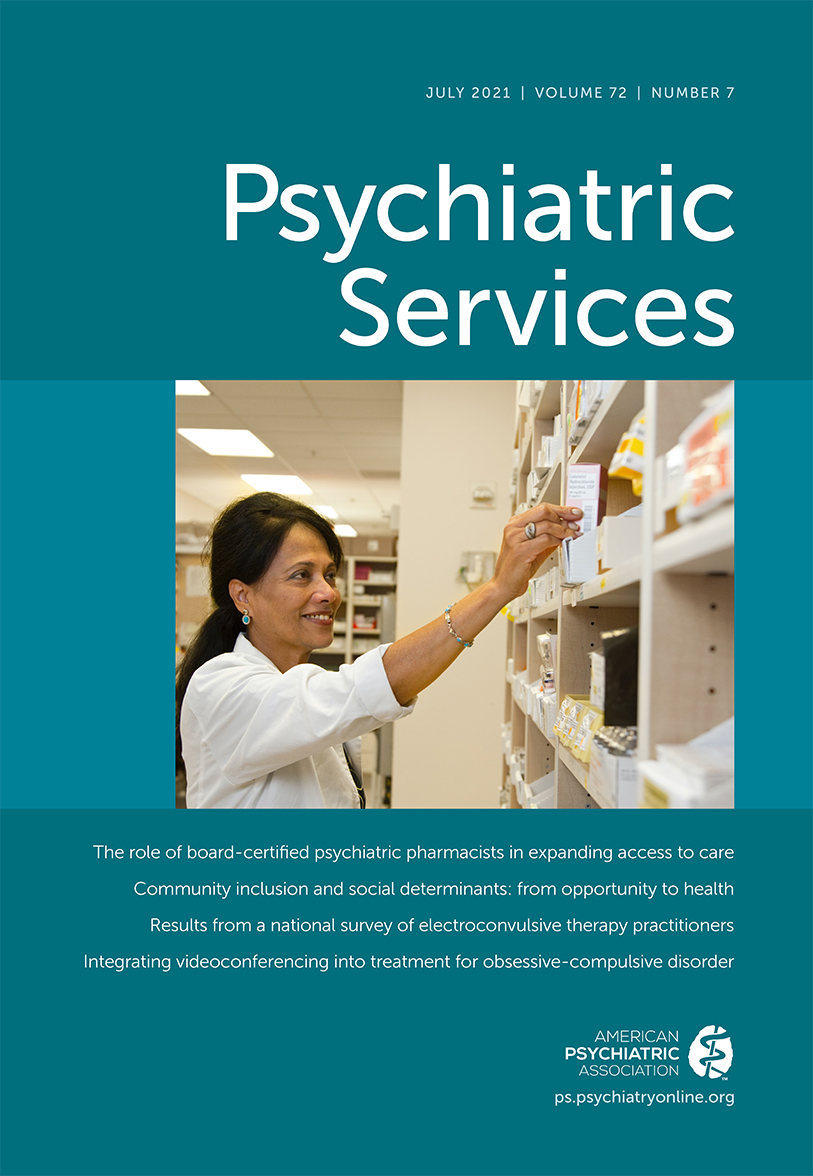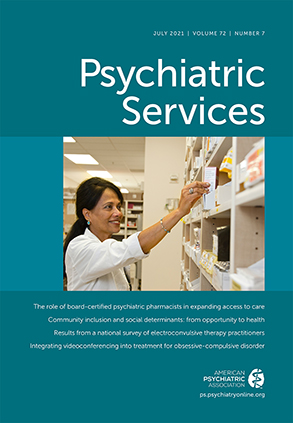Integrating Videoconferencing Into Treatment for Obsessive-Compulsive Disorder: Practical Strategies With Case Examples
Abstract
HIGHLIGHTS
Videoconferencing-Assisted OCD Treatment: Potential Strategies
Hybrid EX/RP.
| Case and background | Presentation | Treatment courseb | Patient comments |
|---|---|---|---|
| 1A. 34-year-old woman requesting EX/RP | Primary obsessions: fear of illness, disgust following perceived contamination. Primary compulsions: ritualized showering, avoiding contact with most surfaces. | Pretreatment YBOCS: 32. Patient completed 12 in-person EX/RP sessions and two videoconferencing-assisted home visits. Exposures: touching toilet seats in office restrooms, imagining strangers’ urine. Midtreatment YBOCS: 19. Transitioned to fully remote to reduce patient’s burden of arranging child care. Patient completed five videoconferencing-assisted sessions, modifying exposures as needed (e.g., touching toilet seats at home, including possible dried urine). Posttreatment YBOCS: 10. | “Scheduling was much easier without having to find a sitter.” |
| 1B. 22-year-old woman requesting EX/RP | Primary obsessions: fears of contracting STIs and causing fires. Primary compulsions: researching STI symptoms, reassurance-seeking, checking appliances. | Pretreatment YBOCS: 28. Patient completed 10 in-person EX/RP sessions. Exposures: reading health-related articles, leaving appliances plugged in, imagining contracting STIs. Midtreatment YBOCS: 11. Transitioned to fully remote during COVID-19. Patient completed six videoconferencing-assisted sessions including similar exposures heightened by using home environment (e.g., leaving stove on). Posttreatment YBOCS: 6. | “Doing exposures at home felt more real because that’s where my fears usually came up.” |
| 2A. 30-year-old woman requesting remote EX/RP | Primary obsessions: fear of self-harm, “just-right” concerns. Primary compulsions: repeating behaviors (e.g., entering/exiting doorways). | Pretreatment YBOCS: 24. Patient completed 16 videoconferencing-assisted sessions. Exposures: reading articles about suicide, writing the word “suicide,” removing objects from “just-right” positions. Posttreatment YBOCS: 3. | “I live upstate, 2 hours from the closest EX/RP therapist. Teletherapy has been lifesaving.” |
| 2B. 28-year-old man requesting remote EX/RP during COVID-19 | Primary obsessions: fear of homosexuality, perfectionism. Primary compulsions: mental reviewing, reassurance-seeking, rereading/rewriting. | Pretreatment YBOCS: 21. Patient completed 16 videoconferencing-assisted sessions. Exposures: writing “I’m gay,” reading articles about gay celebrities, intentionally making typographical errors. Posttreatment YBOCS: 8. | “I was nervous about being judged for these thoughts. Teletherapy seemed less intimidating.” |
| 3. 30-year-old man requesting remote medication treatment during COVID-19 | Primary obsessions: fears about dirt and germs, disgust following perceived contamination. Primary compulsions: excessive handwashing, showering. Medications: Escitalopram 20 mg/day, previously prescribed. | Pretreatment YBOCS: 33. Escitalopram titrated to 40 mg/day, maintained for 6 weeks. Midtreatment YBOCS: 27. Patient reported reduced libido and minimal benefit, prompting cross-titration to sertraline 400 mg. Over subsequent 8 weeks, low libido resolved, and OCD symptoms improved. Posttreatment YBOCS: 15. | “I couldn’t do weekly meetings, and with COVID, exposures felt unsafe. Thankfully, remote medication treatment was an option.” |
| 4. 37-year-old woman requesting OCD treatment after voluntary hospitalization for OCD | Primary obsessions: fears of developing incurable illnesses, being a pedophile, and harming herself/family. Primary compulsions: body-scanning, mental reviewing, reassurance-seeking. Medications (started in hospital 30 days prior): sertraline 100 mg/day, aripiprazole 5 mg/day, N-acetylcysteine 2,400 mg/day. | Pretreatment YBOCS: 33. Patient completed eight in-person EX/RP/psychopharmacology sessions. Sertraline increased to 200 mg/day and N-acetylcysteine to 3,600 mg/day; aripiprazole discontinued because of akathisia. Exposures: watching television shows featuring children, reading about patients with neurological illnesses. Midtreatment YBOCS: 22. Patient completed eight additional in-person treatment sessions. She also joined a weekly videoconferencing-assisted OCD support group, comprising patients from several countries with diverse OCD symptoms. Posttreatment YBOCS: 14. | “Hearing that I wasn’t alone made me feel less ashamed and more self-confident.” |
| 5. 22-year-old man requesting EX/RP at no cost | Primary obsessions: fears of causing harm to himself and to others. Primary compulsions: checking ovens/outlets, avoiding self-harm–related stimuli (rooftops, knives). | Pretreatment YBOCS: 19. Patient completed eight in-person EX/RP sessions with a trainee, who met weekly with a supervising psychologist. Exposures: approaching cliffs/rooftops, holding knives. Midtreatment YBOCS: 17. Treatment and weekly supervision transitioned to videoconferencing during COVID-19. With patient consent, the supervisor occasionally provided live in-session feedback. Modified exposures included approaching patient’s open seventh-floor window. Posttreatment YBOCS: 10. | “I already use [software] for work, so tele-meetings with different people felt normal.” |
Fully remote EX/RP.
Videoconferencing-assisted psychopharmacology.
Virtual support groups.
Videoconferencing-assisted clinical supervision.
Discussion and Future Directions
Supplementary Material
- View/Download
- 188.85 KB
References
Information & Authors
Information
Published In
History
Keywords
Authors
Funding Information
Metrics & Citations
Metrics
Citations
Export Citations
If you have the appropriate software installed, you can download article citation data to the citation manager of your choice. Simply select your manager software from the list below and click Download.
For more information or tips please see 'Downloading to a citation manager' in the Help menu.
View Options
View options
PDF/EPUB
View PDF/EPUBLogin options
Already a subscriber? Access your subscription through your login credentials or your institution for full access to this article.
Personal login Institutional Login Open Athens loginNot a subscriber?
PsychiatryOnline subscription options offer access to the DSM-5-TR® library, books, journals, CME, and patient resources. This all-in-one virtual library provides psychiatrists and mental health professionals with key resources for diagnosis, treatment, research, and professional development.
Need more help? PsychiatryOnline Customer Service may be reached by emailing [email protected] or by calling 800-368-5777 (in the U.S.) or 703-907-7322 (outside the U.S.).

